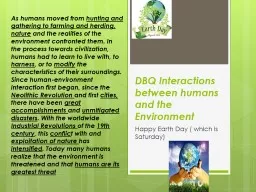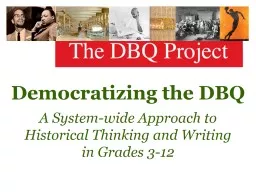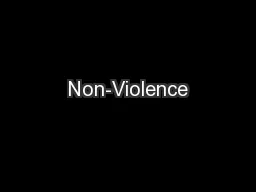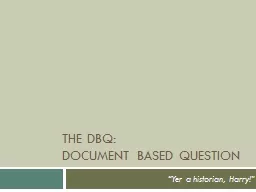PPT-DBQ Interactions between humans and the Environment
Author : mitsue-stanley | Published Date : 2018-11-02
Happy Earth Day which is Saturday As humans moved from hunting and gathering to farming and herding nature and the realities of the environment confronted them
Presentation Embed Code
Download Presentation
Download Presentation The PPT/PDF document "DBQ Interactions between humans and the ..." is the property of its rightful owner. Permission is granted to download and print the materials on this website for personal, non-commercial use only, and to display it on your personal computer provided you do not modify the materials and that you retain all copyright notices contained in the materials. By downloading content from our website, you accept the terms of this agreement.
DBQ Interactions between humans and the Environment: Transcript
Download Rules Of Document
"DBQ Interactions between humans and the Environment"The content belongs to its owner. You may download and print it for personal use, without modification, and keep all copyright notices. By downloading, you agree to these terms.
Related Documents














